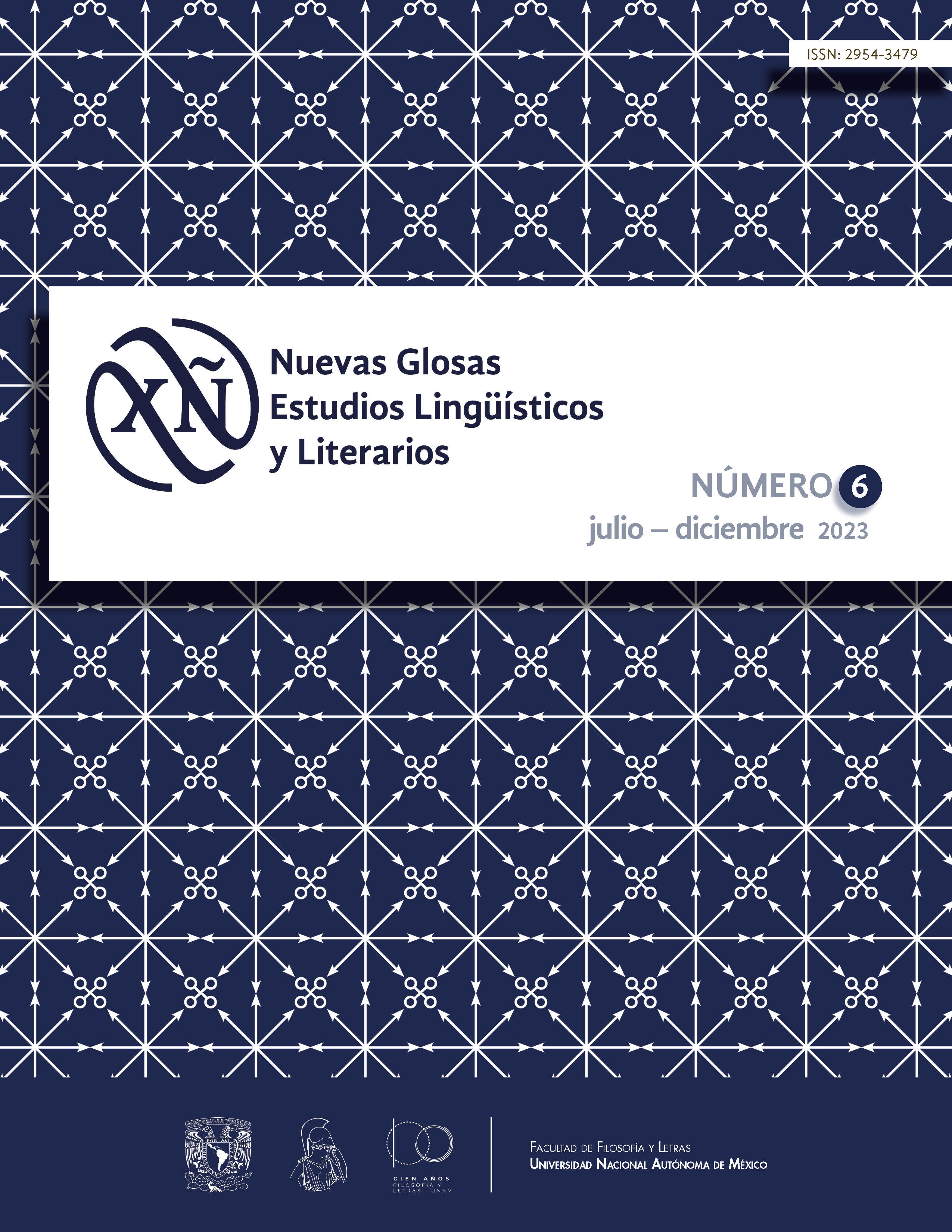The Discourse Marker por lo menos in the Spanish of Buenos Aires: From Minimal Quantity to Attenuation
Main Article Content
Abstract
Within the frame of the Prototyical-Cognitive Approach (Langacker, Lakoff, Hopper, amongst others), this paper presents an analysis of the discourse marker por lo menos in the Spanish of Buenos Aires. It is stated that por lo menos manifests a continuum of semantic and pragmatic values that go from concrete meanings (expressing minimum quantities) to more pragmatic ones (expressing attenuation), in which these meanings are related to each other through the attribute of [+imprecision], provided by preposition por. Based on these meanings, the discursive syntactic behavior that it manifests can be at least described. According to each context of use, it at least behaves as a reformulator or focalizer. No examples were found in the corpus that could associate the marker with a thematizer function (that is, a connector that introduces old information that does not persist in the following discourse). In terms of discourse functions, por lo menos behaves as a focus marker when it conveys a sense of quantity—since it introduces new information that persists on its right, without any presence of pause—while working as a reformulation marker when implemented as an attenuation strategy—since it introduces known information that persists and appears, generally, between pauses. To support the hypothesis, the paper analyzes examples selected from the preseea- Buenos Aires oral corpus.
Article Details

This work is licensed under a Creative Commons Attribution-NonCommercial-NoDerivatives 4.0 International License.
References
Borzi, Claudia. (2008). “El uso de ya que y como en el habla culta de la ciudad de Buenos Aires”. Oralia, 11, 279-305. https://doi.org/10.25115/oralia.v11i.8242.
Borzi, Claudia. (2012). “Gramática y discurso: cláusulas y conectores de la zona causal”. Revista Philologus, (53supl), 212-230. http://hdl.handle.net/11336/196339.
Borzi, Claudia. (2013). “El uso de entonces/así que en contexto narrativo sobre datos del preseea-Buenos Aires”. Estudios de Lingüística, (27), 61-87. https://doi.org/10.14198/ELUA2013.27.03.
Briz, Antonio. (1995). “La atenuación en la conversación coloquial. Una categoría pragmática”. En Luis Cortés Rodríguez (Ed.), El español coloquial. Actas del I Simposio sobre Análisis del Discurso Oral. Almería 23-25 de noviembre de 1994 (pp. 101-122). Universidad de Almería.
Briz, Antonio. (2007). “Para un análisis semántico, pragmático y sociopragmático de la cortesía atenuadora en España y América”. Lingüística Española Actual, 29(1), 5-40.
Briz, Antonio; Pons, Salvador; Portolés, José. (2008). Diccionario de partículas discursivas del español. Recuperado de http://www.dpde.es/#/.
Firbas, Jan. (1965). “A Note on Transition Proper in Functional Sentence Analysis”. Philologica Pragensia, 8(47), 2-3.
Firbas, Jan. (1970). “On the Interplay of Means of Functional Sentence Perspective”. Actes du Xè Congrès International des Linguistes: Bucarest, 28 août – 2 septembre 1967 (pp. 741-744). Editions de l’Académie de la République socialiste de Roumanie.
Firbas, Jan. (1974). “Some Aspects of the Czechoslovak Approach to Problems of Functional Sentence Perspective”. En Frantisek Daneš (Ed.), Papers on Functional Sentence Perspective (pp. 11-37). Academia; Mouton.
Fuentes Rodríguez, Catalina. (2016). “Los marcadores de límite escalar: argumentación y ‘vaguedad’ enunciativa”. RILCE, 32(1), 106-133. https://doi.org/10.15581/008.32.2970.
Garcés Gómez, María Pilar. (2006). “Las operaciones de reformulación”. En Milka Villayandre Llamazares (Ed.), Actas del XXXV Simposio Internacional de la Sociedad Española de Lingüística (pp. 654-672). Universidad de León.
Givón, Talmy. (1979). On Understanding Grammar. Academic Press.
Gülich, Elisabeth: Kotschi, Thomas. (1993). “Les marqueurs de la reformulation paraphrastique”. Cahiers de Linguistique Française, (5), 305-346. https://www.unige.ch/clf/fichiers/pdf/13-Gulich_nclf5.pdf.
Gülich, Elisabeth; Kotschi, Thomas. (1995). “Discourse Production in Oral Communication. A Study Based on French”. En Uta M. Quasthoff (Ed.), Aspects of Oral Communication (pp. 30-66). De Gruyter. https://doi.org/10.1515/9783110879032.30.
Hopper, Paul. (1988). “Emergent Grammar and the A Priori Grammar Postulate”. En Deborah Tannen (Ed.), Linguistics in Context: Connective Observation and Understanding (pp. 117-134). Ablex.
Kotschi, Thomas. (2001). “Formulierungspraxis als Mittel der Gesprächsaufrechterhaltung”. En Klaus Brinker, Gerd Antos, Wolfgang Heinemann y Sven F. Sager (Eds.), Text- und Gesprächslinguistik: Ein internationales Handbuch zeitgenössischer Forschung, Vol. 2 (pp. 1340-1348). De Gruyter Mouton.
Lakoff, George. (1987). Women, Fire and Dangerous Things. Chicago University Press.
Martín Zorraquino, María Antonia; Portolés Lázaro, José. (1999). “Los marcadores del discurso”. En Ignacio Bosque y Violeta Demonte (Dirs.), Gramática descriptiva de la lengua española. Volumen 3: Entre la oración y el discurso. Morfología (pp. 4051-4213). Espasa-Calpe.
San Martín Núñez, Abelardo; Rojas Inostroza, Cristian. (2020). “Los operadores escalares en el español hablado de Santiago de Chile: análisis pragmático y sociolingüístico de sobre todo, al menos y por lo menos”. Estudios Filológicos, (65), 213-232. https://doi.org/10.4067/S0071-17132020000100213.

